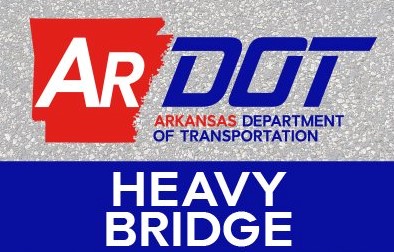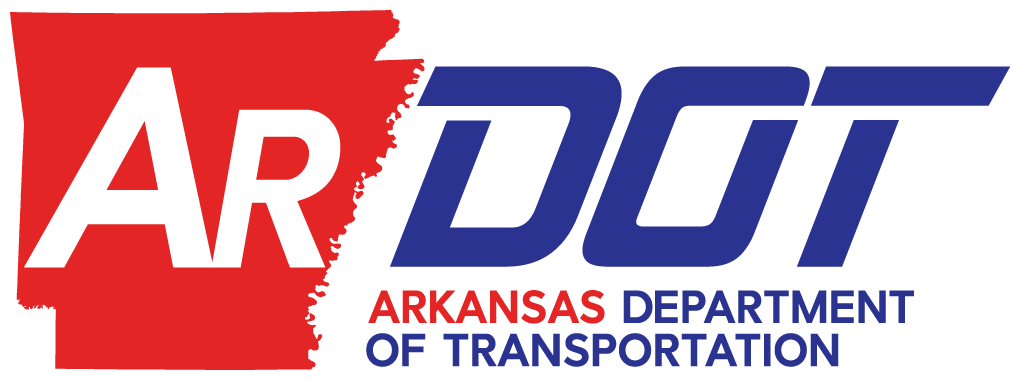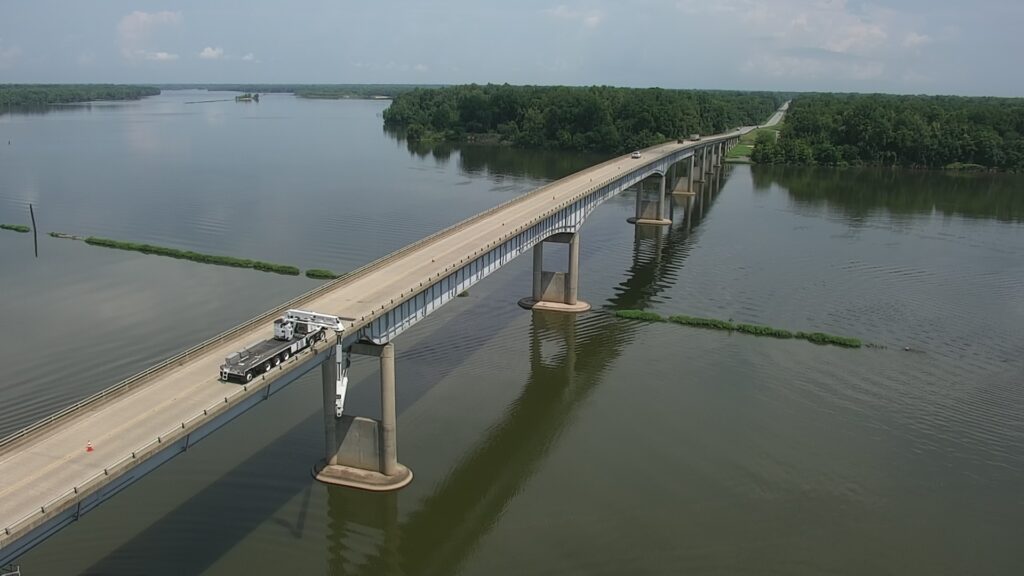
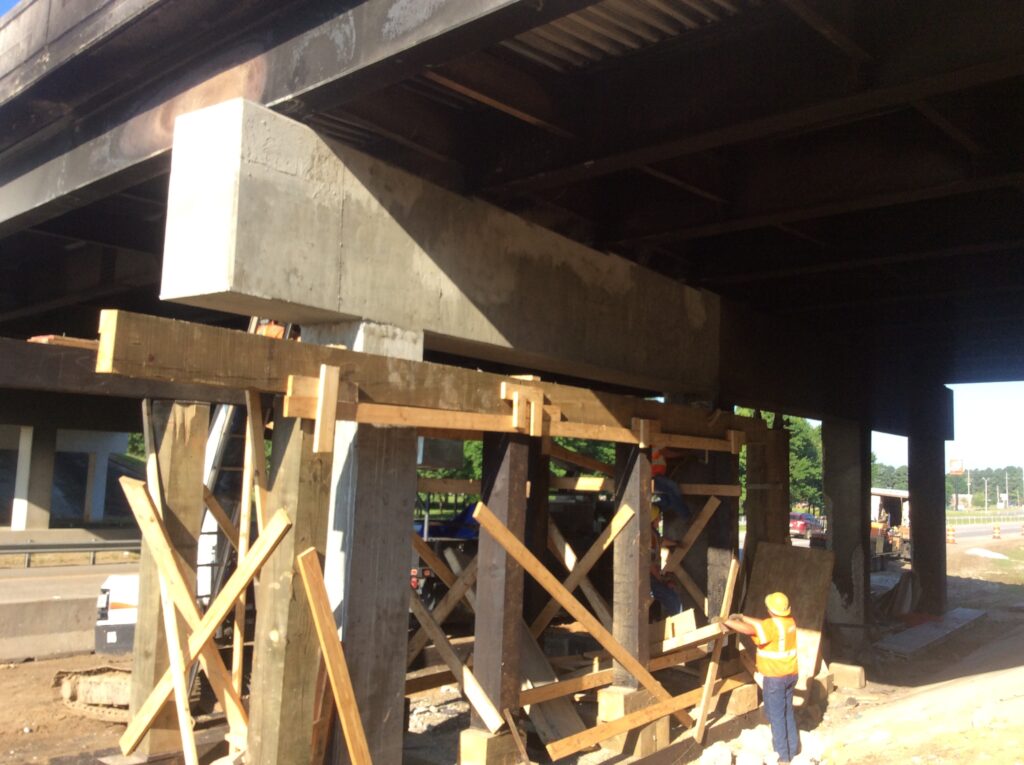
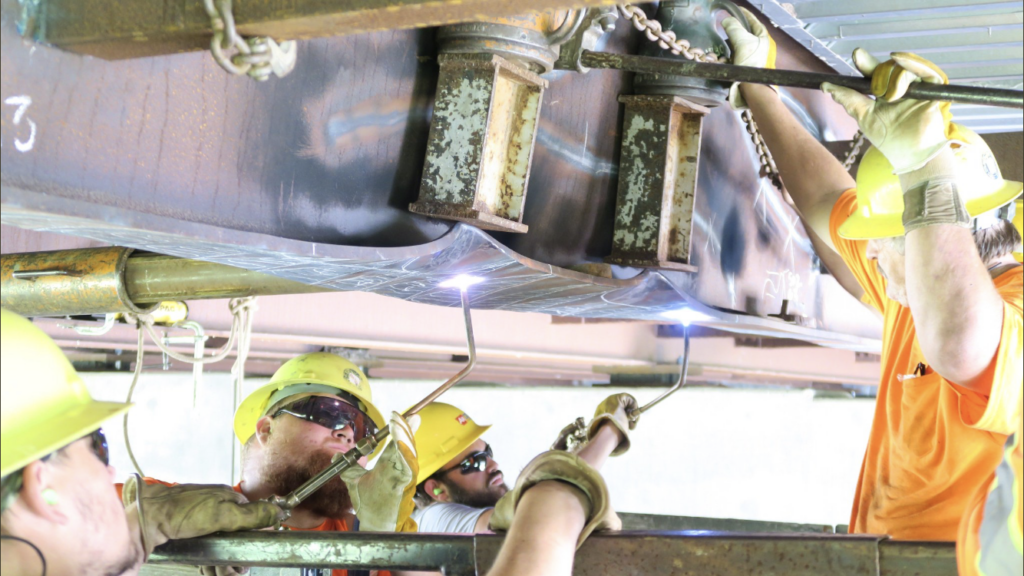
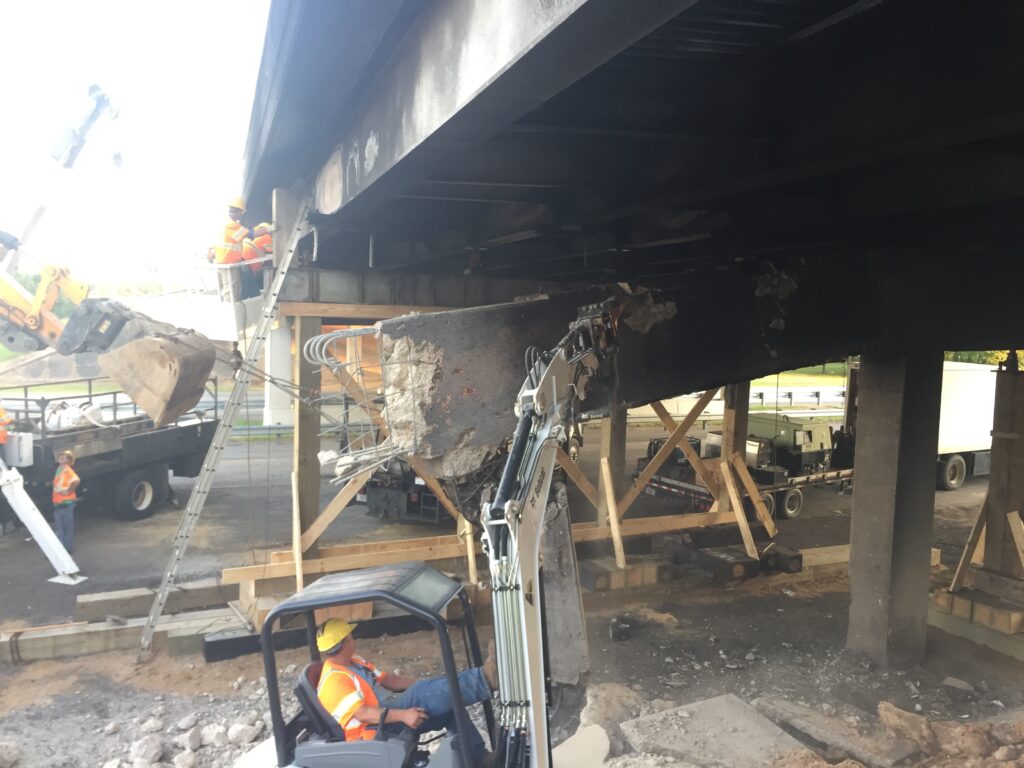
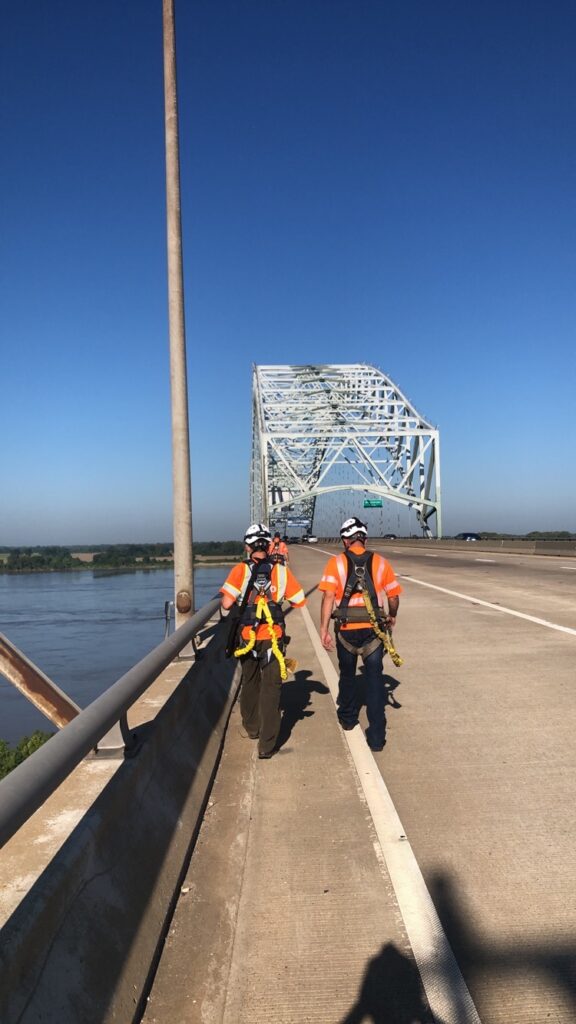
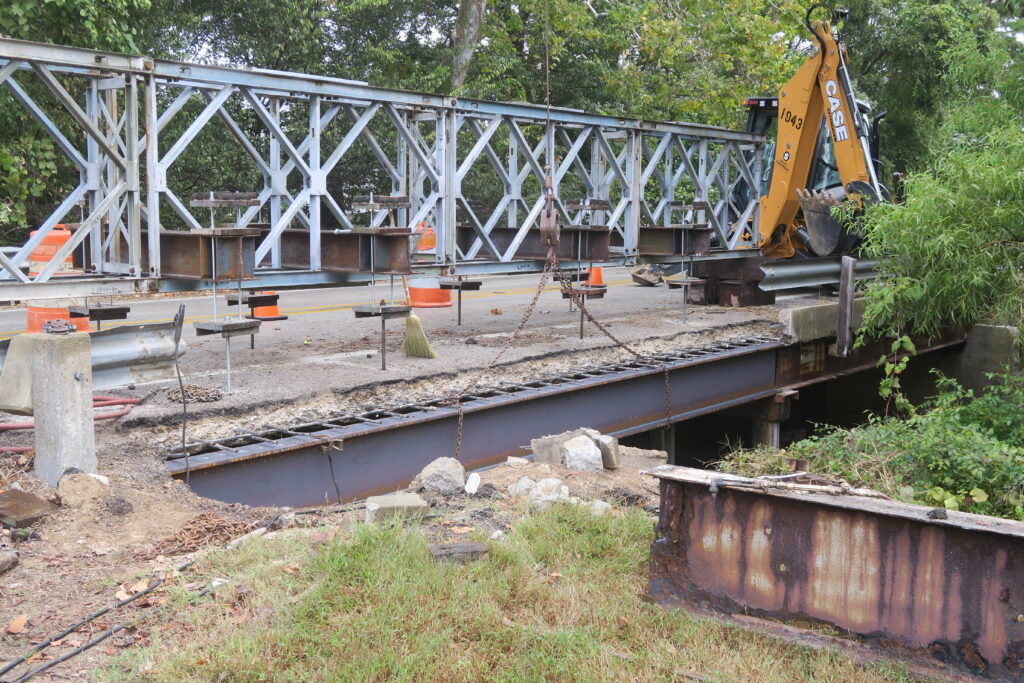
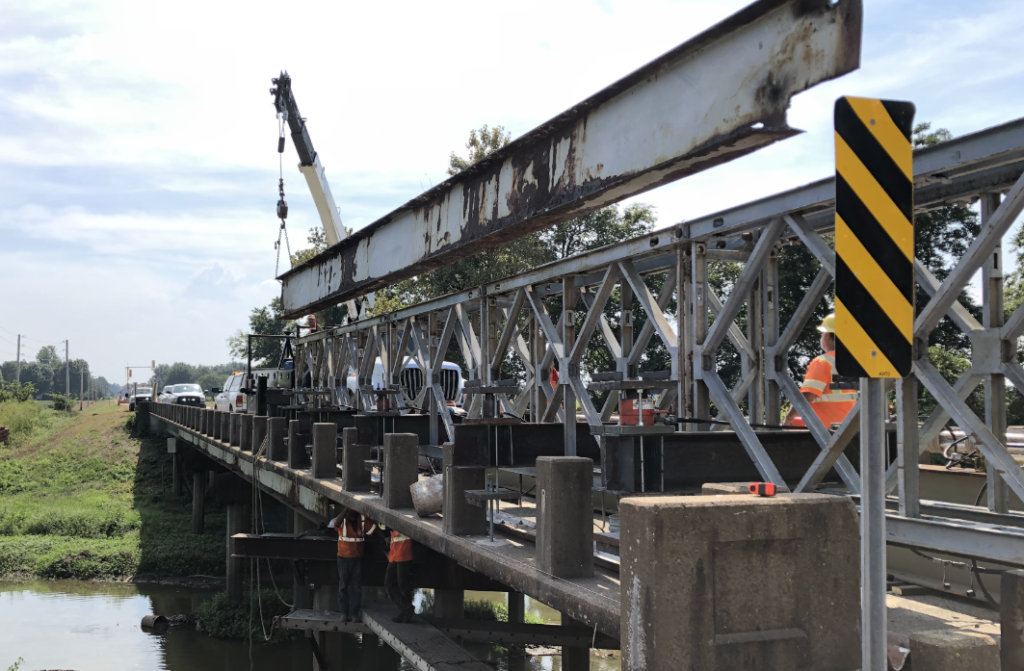
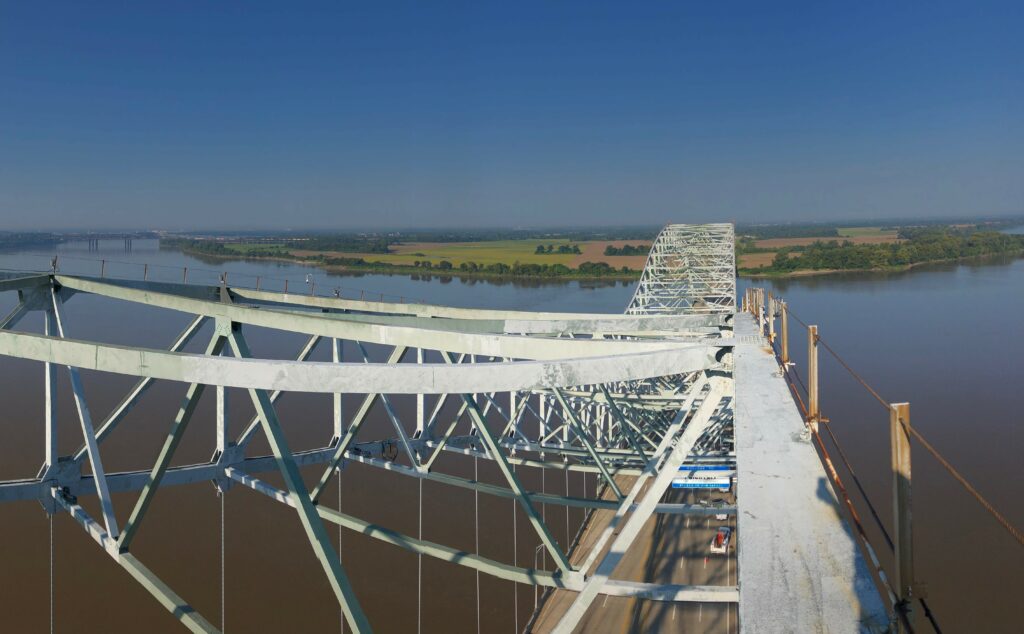
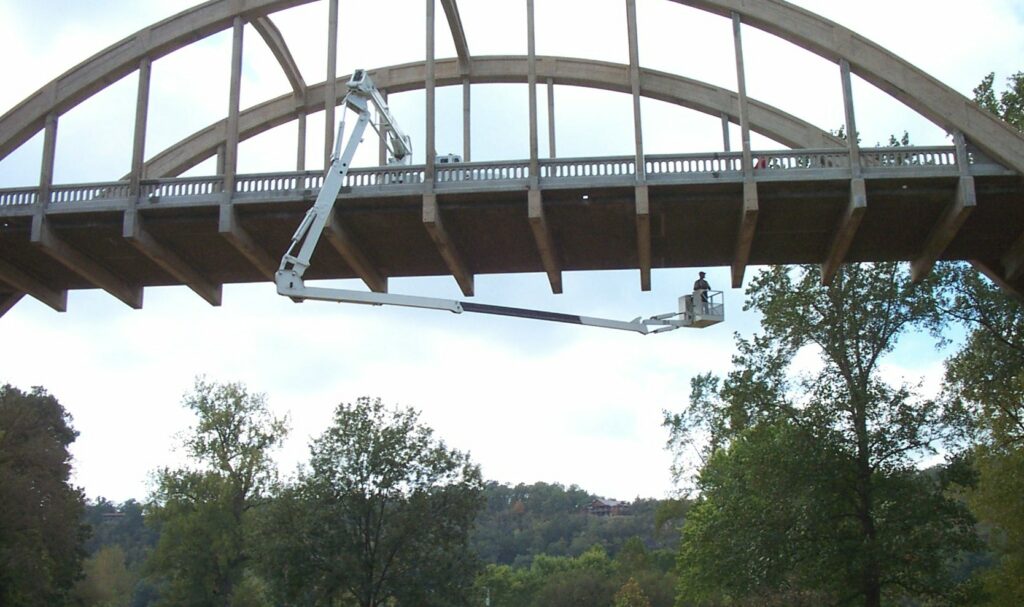
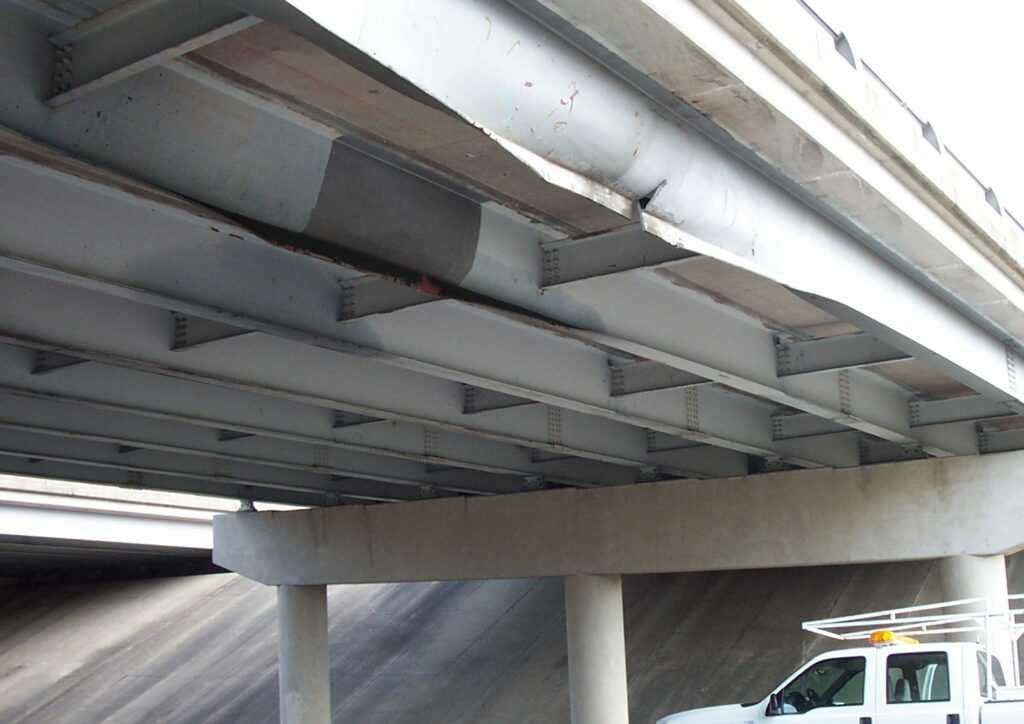
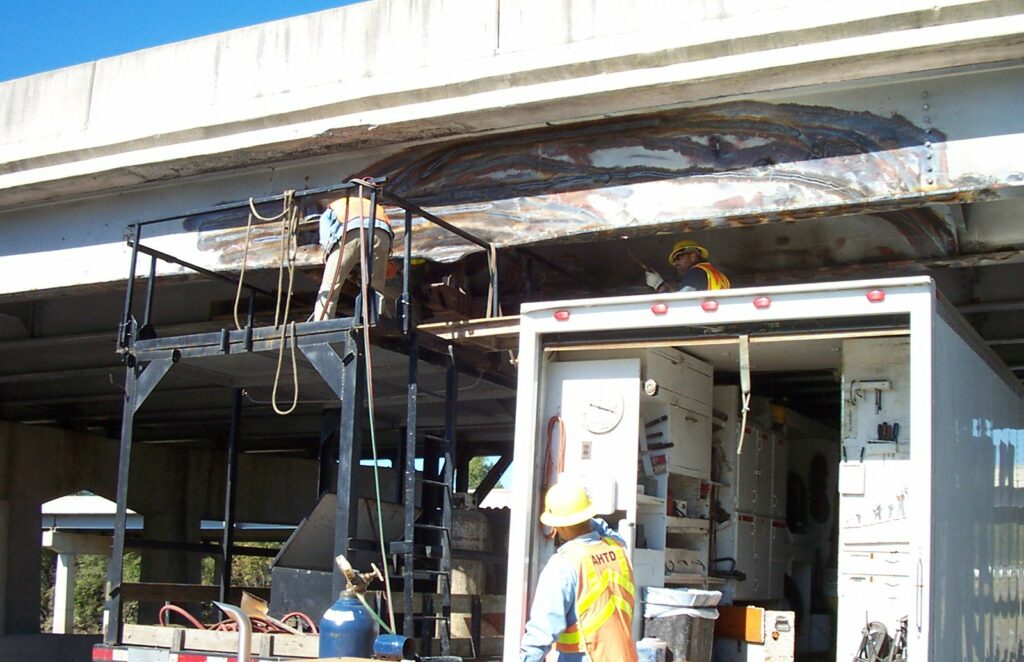
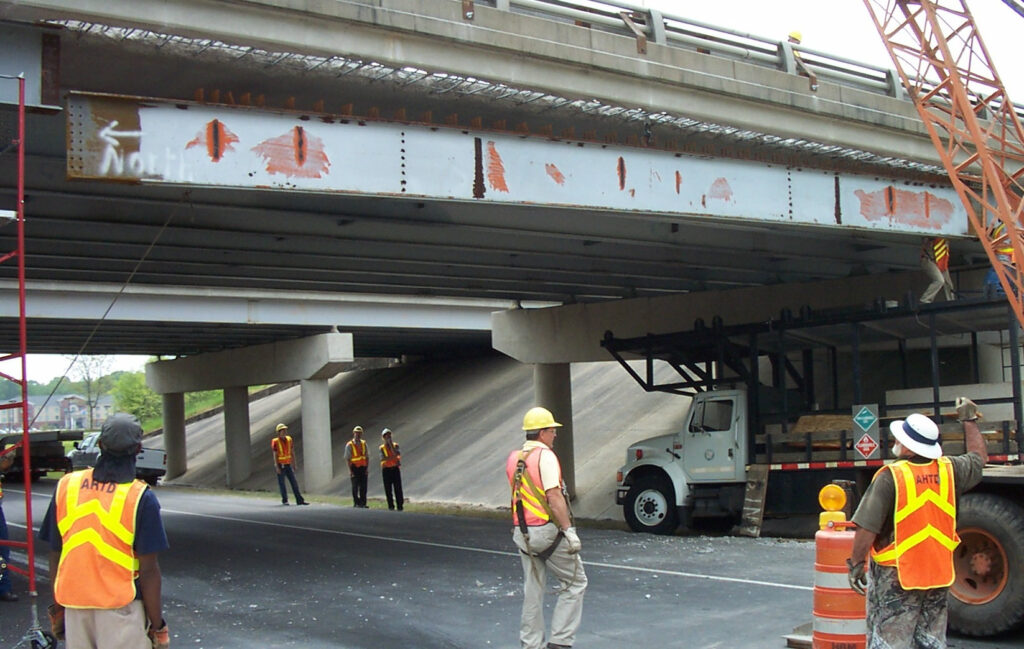
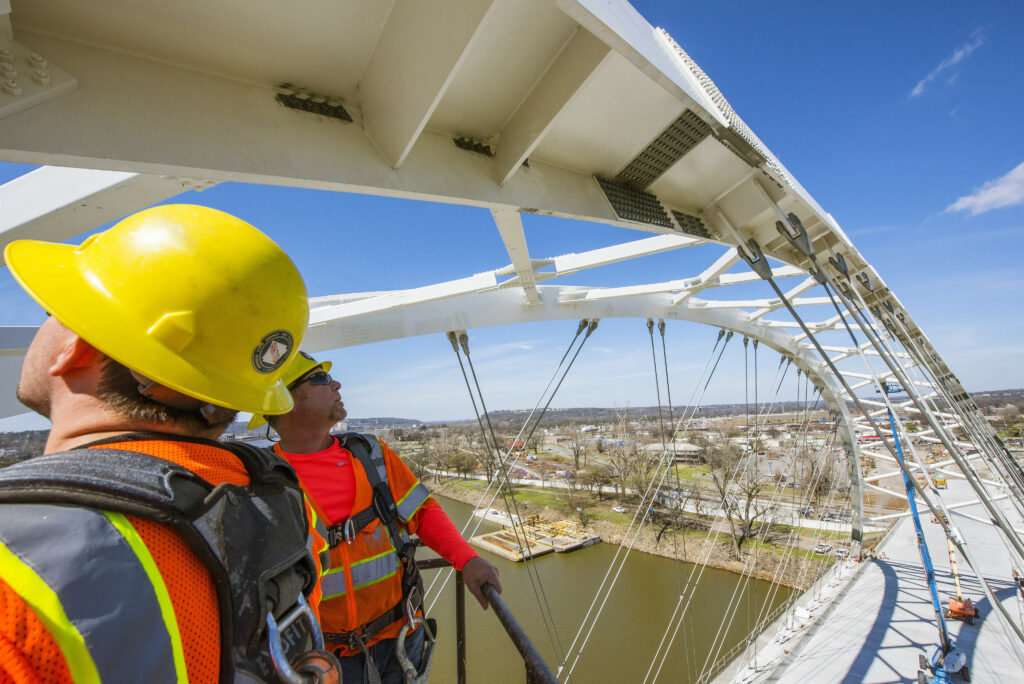
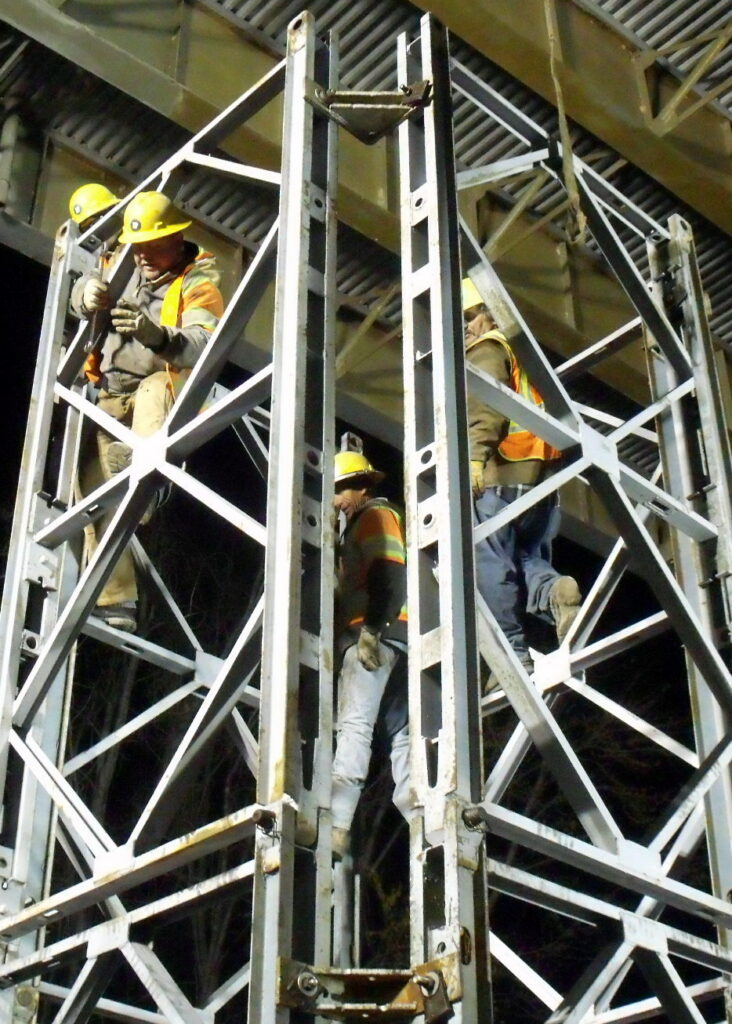
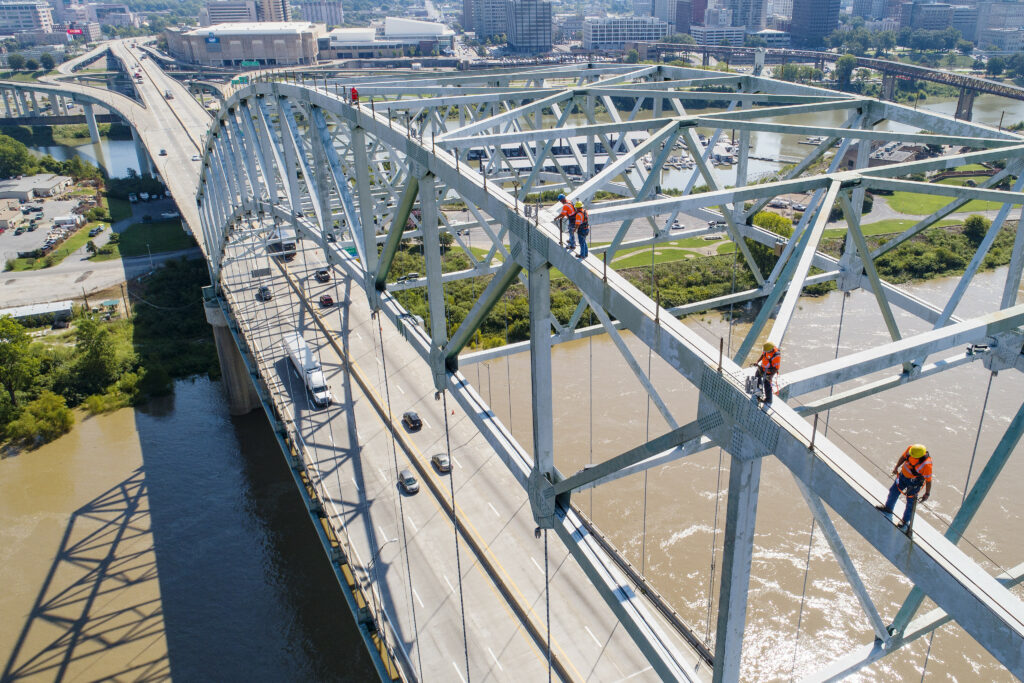
Bridge Operations is tasked with inspecting and maintaining approximately 60 of the largest and more unique bridges in Arkansas with a asset value of 1.5 billion USD. Bridge Operations is comprised of 6 bridge specialty crews, 5 bridge inspections teams, and engineering managing support.
Select on the topics below to learn more about the important work involved in maintaining and preserving Arkansas’s Bridges for the future:
Bridge Operations Responsibilities
-Division Head of Bridge Operations who is responsible for the supervision of the Bridge Operations Division. The Division Head of Bridge Operations is the State-wide Bridge Inspection Program Manager who oversees all operations of the State’s Bridge Inspection Program.
-Assistant Division Head who is responsible for bridge repair design/details, oversight of 4 repair crews, a bridge building crew, a polymer overlay crew, a paint crew and the Request for Proposals to hire Engineering firms to perform Underwater Bridge inspections.
-Senior Bridge Operations Engineer who is responsible for the oversight of the 5 Statewide Inspection Teams as well as the QA/QC bridge inspection process, and maintenance contract development such as bridge paint contracts.
-Bridge Operations Engineer who is responsible for analyzing and recommending solutions to bridge maintenance problems, work with inspection teams and help to improve the overall process, and help to manage the Salvaged Bridge Material Program.
– Bridge Management Section who is responsible for maintaining all aspects of the databases used within the bridge management program, assisting bridge inspection personnel in proper data collection, and developing priorities for optimum bridge management within the constraints of available funds, as well as overseeing the drone and LiDAR initiatives within bridge inspection.
– Bridge Operations Superintendent who coordinates all the crew activities and assures that the crews have the right tools and equipment to do the job. The Superintendent is also tasked with cost accounting for bridge damage to assure reimbursement from the respective insurance companies.
– Four Bridge Repair Crews with one supervisor and five crew members each, one Paint Crew with one Crew Leader and three crew members and one Bridge Polymer Overlay preservation crew with one Crew Leader and three crew members.
– Five State Wide Inspection Teams, which consists of a Bridge Inspector and an Assistant Bridge Inspector.
Bridge Operations Repair Crews
Each of the four bridge repair crews specialize in welding, steel fabrication, concrete finishing and concrete forming. The main quality that might characterize a member of one of these crews is that they are builders and fixers.
The following are examples of typical bridge problems repaired by Bridge Operations Maintenance Crews:
– Rust and holes develop on girders from salt and lack of paint.
– Potholes develop from salt corroding reinforcing steel in bridge decks.
– Failures in bridge joint armors cause dangerous situations.
– Fatigue cracks develop as a result of high traffic volumes and poor fatigue details.
One of the major causes of repair to bridges is accident damage — over height loads strike the girders on a bridge and can cause extremely serious damage. These girders are usually repaired by heat straightening but may require complete replacement. In some cases, trucks can crash into bridge piers or bents – when this happens, the crews will go into overtime. This means that the crews have to be available for immediate mobilization to a bridge site with the right tools and equipment to do the job.
Bridge Operations is also involved in product evaluation as it relates to bridges including: joint materials, paints, concrete deck patch material, concrete deck sealing material, epoxy materials, etc.
Bridge Operations Paint Crews
The paint crew specializes in painting Interstate highway bridges. A power washer is used to clean the existing paint surface. Then an overcoat of Calcium Sulfonate paint is applied. By cleaning and painting steel members of the bridge superstructure, corrosion to the members is greatly reduced. This ultimately extends the life of superstructure members, thus extending the life of the Arkansas Bridge.
Bridge Operations Polymer Crew
The Polymer Crew specializes in overlaying bridge decks that are in relatively good condition. The purpose of a polymer overlay is to seal cracks in the deck to prevent water and chlorides from reaching the reinforcing steel allowing for corrosion and deck deterioration. This ultimately gives new life and extends the life of a bridge deck which in turn leads to a better overall structure for the State of Arkansas.
The crew performs this work by cleaning and shot blasting the existing deck surface to prepare the area for good adhesion. The crew will then apply a two part epoxy to the deck followed by covering the epoxy with aggregate. This gives the deck a protective coating that will preserve the deck condition for many years.
Bridge Operations Bridge Building Crew
Bridge Operation’s newest crew will target culverts and small bridges where existing infrastructure is of poor condition or closed. The bridge building crew (backed by engineering support) will be able to cut cost and time associated with traditional bridge replacement contract jobs in order to reopen or keep open State Owned routes. The new crew has been making big impacts in the state since 2021.
Bridge Operations Bridge Inspection
NBIS Bridge Inspection Program Oversight
The bridge inspection program is essential to ensure the safety of our bridges. The primary purpose of the inspection program is to ensure safety to traveling public, however the data produced by the inspections serves multiple functions for the Department. The data helps prioritize bridge rehabilitation or replacement projects, budget planning, routing over height or overweight permit loads, and a work-priority list for Bridge Maintenance Repair Crews.
Statewide Bridge Inspectors
Bridge Operations is responsible for inspecting more than 60 of the largest bridges in the state in accordance with the National Bridge Inspection Standards – more than half these bridges require inspection every year.
An inspection of one of these bridges can take from one to three weeks and requires such specialized equipment as an Ultrasonic Flaw Detector to inspect fracture critical bridge elements and an Aspen Aerial A75 Bridge Inspection Unit to reach over the side and 75’ under bridges.
Bridge Operations is also responsible for Quality Control (QC) and Quality Assurance (QA) of the Arkansas Bridge Inspection Program. These measures are in place to make sure all bridge inspections are uniform throughout the 10 Districts within the state.
Bridge Operations Other Duties
Peel Ferry
Bridge Operations is Liaison to District 9 relating to the Peel Ferry on Bull Shoals Lake. Bridge Operations helps assist the Coast Guard in inspecting and maintaining the Ferry and dry dock area.
Assist with District Bridge Repairs
When a bridge is involved in a serious accident or serious problems are found, Bridge Operations is called upon to make an evaluation of the damage and recommend a course of action. Bridge Operations Maintenance Crews assist the District Bridge Crews with repairs as needed.
Arkansas Bridge Information/Data
Salvaged Bridge Material Program
Bridge Informative Links:
Transportation System Preservation Technical Services Program
U.S. DOT Bridge Preservation Guide
